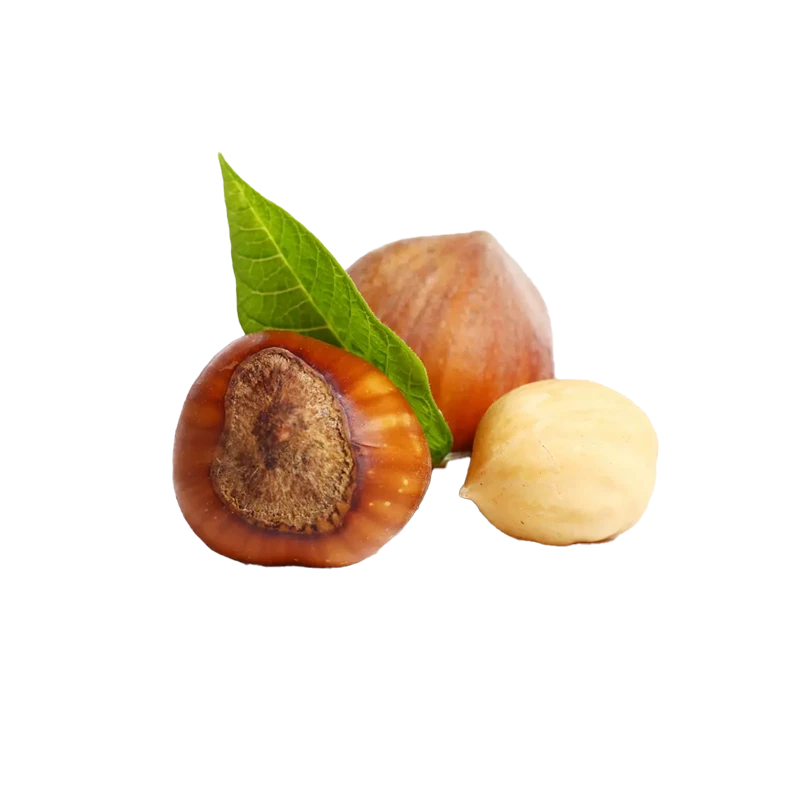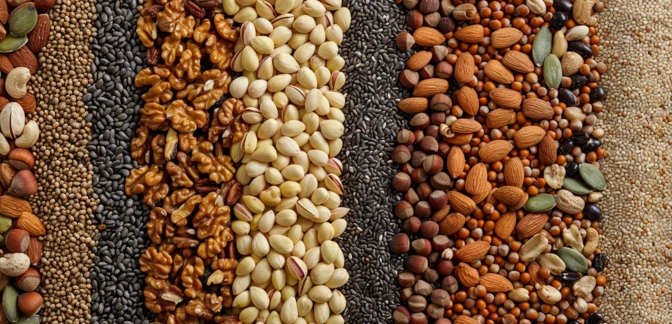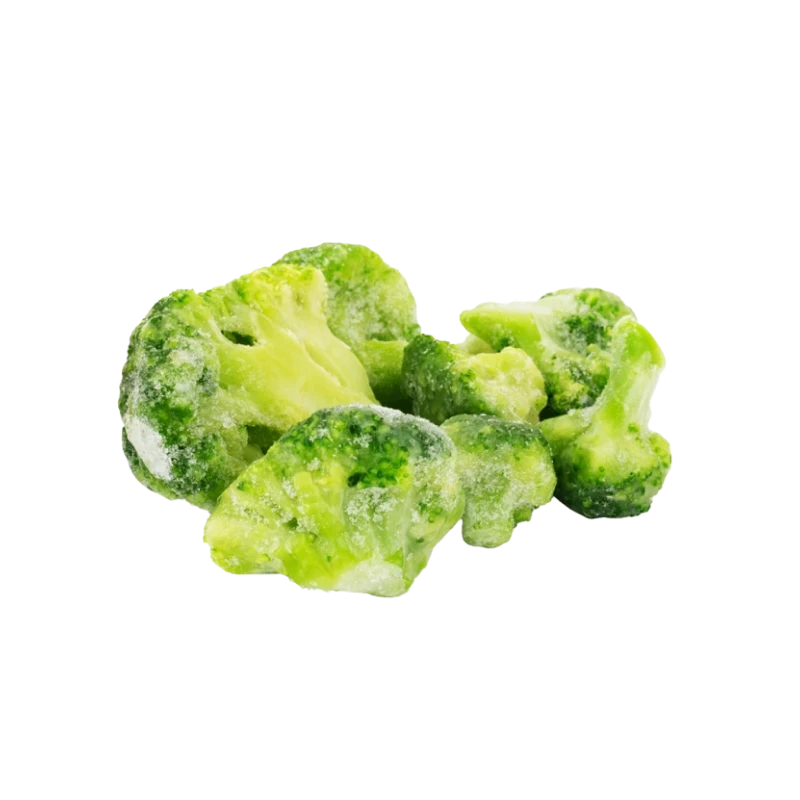Hazelnuts — Nutrients, Health Benefits, and Shopping Tips

Written by Listonic Team
Last update on September 4, 2024
Nutrition facts
Nutrition facts
Amount per 100 g
Calories
🔥 628 kcal
| Nutrients per: 100 g | Value | % Daily Value* |
|---|---|---|
| Carbs | 17 g | 6.18% |
| Fiber | 10 g | 35.71% |
| Sugars | 4 g | 8% |
| Glycemic Index | 15 | - |
| Protein | 15 g | 30% |
| Sodium | 0 mg | - |
| Total Fat | 61 | 78.21% |
*The % of Daily Value (DV) tells you how much a nutrient in a serving of food contributes to a daily diet. 2,000 calories a day is used for general nutrition advice.
15 g
🧀 Good Protein Content
10 g
🥔 Good Fiber Content
Did you know?
Health benefits
- Rich in healthy fats, particularly monounsaturated fats, which support heart health and provide energy.
- High in antioxidants such as Vitamin E, which help protect the body from free radicals and reduce inflammation.
- Contains essential vitamins and minerals such as Vitamin B6, folate, magnesium, and potassium, which support overall health and well-being.
- High in fiber, promoting digestive health, regular bowel movements, and a healthy gut microbiome.
- Supports heart health by helping to lower cholesterol levels and reduce the risk of cardiovascular disease.
Health risks
- Potential for allergic reactions in individuals with nut allergies, causing symptoms like itching, swelling, difficulty breathing, or anaphylaxis.
- High calorie content which can contribute to weight gain if consumed in large quantities, especially as a snack or ingredient in calorie-dense foods.
- High fat content although mostly healthy fats, excessive consumption can still contribute to increased caloric intake and weight gain.
- Risk of digestive discomfort such as bloating or gas when consumed in large quantities due to their high fiber content.
How to choose hazelnuts
Hazelnuts should be round and plump with a smooth, glossy shell. The color should be a uniform brown, indicating freshness and proper storage.
Do not buy hazelnuts that are shriveled or have cracked shells, as they are likely stale or damaged. Fresh hazelnuts should have a crunchy texture and a sweet, nutty flavor.

How to store hazelnuts
Hazelnuts thrive when stored in a cool, dry environment. An airtight container in your pantry is ideal to keep them crunchy and flavorful. This method helps them stay fresh, making them perfect for snacking or baking.
Storing hazelnuts near heat sources can lead to a rancid taste. It's best to keep them away from the stove or direct sunlight. Consistent cool conditions ensure their rich, nutty flavor and crunch are preserved.
✅ Extra Tip
How long do they last?
Hazelnuts can last for 6-12 months when stored in an airtight container in a cool, dark place. For longer storage, hazelnuts can be refrigerated or frozen, where they can last up to 1-2 years. Proper storage helps prevent them from becoming rancid.
What to do with leftovers?
Leftover hazelnuts can be used in a variety of sweet and savory dishes. Chop them and add to salads, grain bowls, or yogurt for a crunchy, nutty flavor, or mix them into baked goods like cookies, muffins, or cakes. Hazelnuts are also great when toasted and sprinkled over pasta dishes with vegetables and cheese.
Use hazelnuts to make a homemade hazelnut butter by blending them with a bit of oil and salt, perfect for spreading on toast or using in recipes. If you have a lot of hazelnuts, consider making a batch of hazelnut truffles by mixing ground hazelnuts with chocolate, then rolling into balls and coating with cocoa powder. Hazelnuts can also be added to a granola or trail mix with dried fruit and seeds, or used as a topping for ice cream or oatmeal. For a quick snack, enjoy hazelnuts on their own, roasted and lightly salted, or mix them into a smoothie for added texture and flavor.
👨⚕️️ Medical disclaimer
How hazelnuts support specific health conditions
Hazelnuts are a nutrient-dense nut rich in healthy fats, particularly monounsaturated fats, which support heart health by lowering bad cholesterol levels. They are also high in vitamin E, promoting skin health by protecting against oxidative stress. Hazelnuts contain fiber, supporting digestive health, and their magnesium content helps maintain muscle health and regulate blood pressure. Additionally, hazelnuts are a good source of plant-based protein, making them a great snack for weight management.
Discover products from other categories
Listonic Team
Fact-checked
Our editorial team checked this article to make sure it was accurate at the time of publishing it.
Get the top-rated shopping list app







